How to Choose the Perfect Gongfu Tea Set | Complete 2025 Guide
Discover how to choose the perfect Gongfu tea set with our expert guide. Learn about materials, components, and buying tips for authentic Chinese tea sets in 2025.
EDITOR'S PICKSTEA WARES GUIDE
TEAPOTARTISAN
10/6/202513 min read


4.3. Ceramic
Ceramic offers the perfect middle ground between porcelain's refinement and practicality needs. Modern ceramic tea sets come in countless designs, colors, and finishes.
Characteristics:
Durable and chip-resistant
Wide range of designs
Good heat retention
Affordable pricing
Best for:
Daily use: Withstands regular handling
Casual tea drinkers: Less precious than porcelain
Gifting: Beautiful options at various price points
Outdoor use: More durable for travel
Popular styles:
Celadon: Jade-green glaze, classic Chinese aesthetic
Modern minimalist: Clean lines, contemporary appeal
Hand-painted: Artistic, decorative pieces
4.4. Ruyao (汝窑)
How to Choose the Perfect Gongfu Tea Set: Your Complete Guide to Authentic Chinese Tea Culture
TEAPOTARTISAN
Picture this: steam rising from a delicate porcelain gaiwan, the gentle clink of small cups on a bamboo tray, and the meditative rhythm of multiple quick infusions that transform simple tea leaves into liquid poetry. This is the magic of Gongfu tea (功夫茶) – an ancient Chinese brewing method that turns every tea session into a mindful ceremony.
Unlike Western-style tea brewing where you steep once and walk away, Gongfu tea is all about skill, patience, and the right tools. The word "Gongfu" literally means "skill achieved through practice," and nowhere is this more evident than in the careful selection of your tea set. The right Gongfu tea set doesn't just brew tea – it enhances flavors, creates ritual, and connects you to centuries of Chinese tea culture.
Whether you're a curious beginner drawn to the elegance of Chinese tea ceremonies or an experienced tea lover ready to upgrade your brewing game, choosing the perfect Gongfu tea set can feel overwhelming. With so many materials, styles, and price points available, where do you even start?
This comprehensive guide will walk you through everything you need to know about how to choose the perfect Gongfu tea set that matches your taste, budget, and tea-drinking goals. From understanding the essential components to selecting the right materials and caring for your investment, you'll have all the knowledge needed to make an informed decision.
Key Takeaways
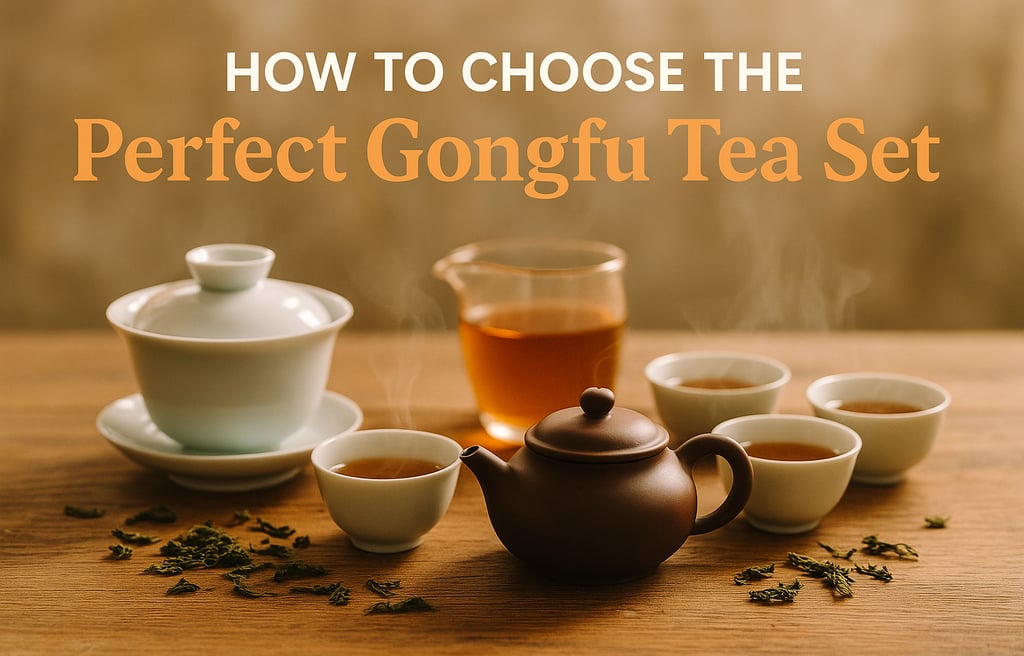

3.2. Teapot
Gongfu teapots are significantly smaller than Western teapots, typically ranging from 80ml to 200ml. This small size ensures quick, controlled infusions.
Key differences from regular teapots:
Much smaller capacity (shot glass vs. coffee mug size)
Designed for multiple quick steepings
Often made from specialized clays like Yixing
Popular materials:
Yixing clay: Porous, enhances flavor over time
Porcelain: Clean, neutral taste
Ceramic: Durable and affordable
Best for: Oolong teas, pu'er teas, and when you want the clay to interact with and enhance the tea's flavor profile.
3.3. Fairness Cup (公道杯)
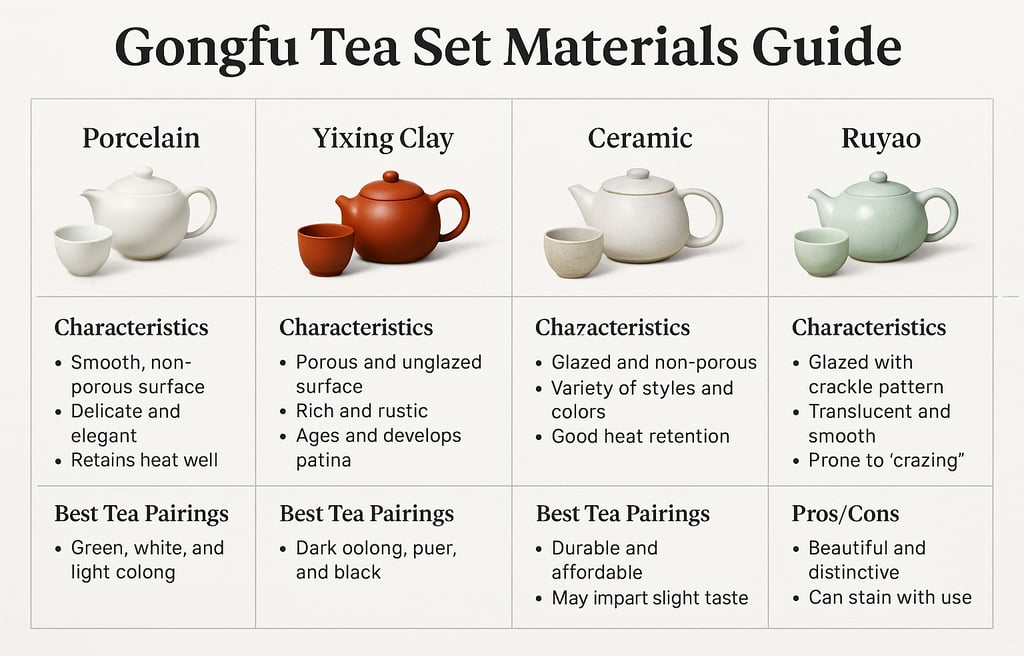

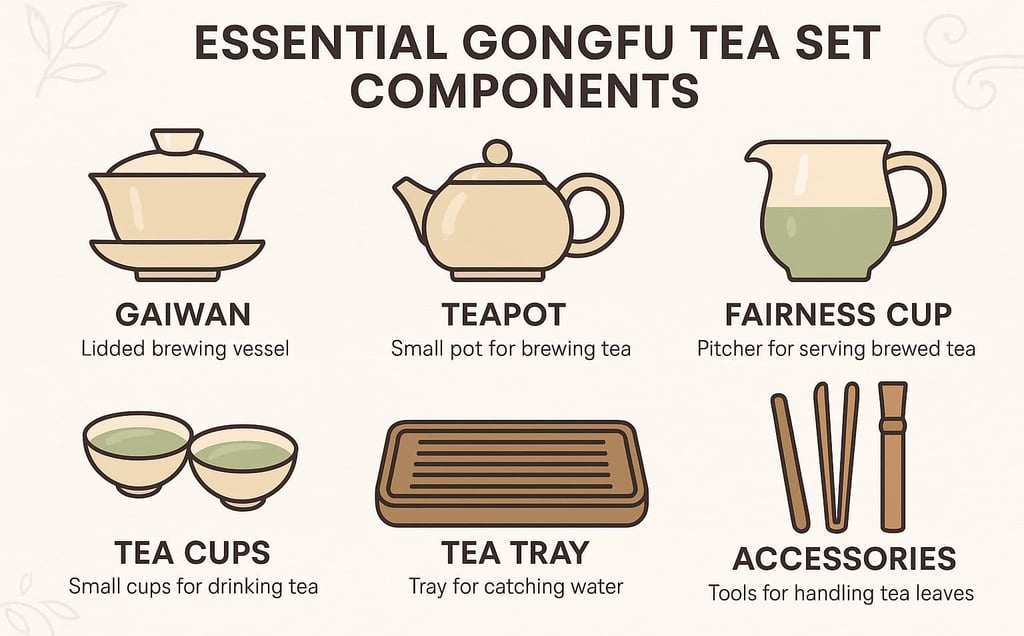

Mix-and-Match Strategies
Start small, expand thoughtfully:
Begin with basic porcelain gaiwan
Add specialized teapot for favorite tea type
Upgrade accessories gradually based on use
Invest in quality storage as collection grows
Multi-tea approach:
Porcelain gaiwan for delicate teas
Yixing teapot for oolongs
Ceramic teapot for daily drinking
Shared accessories across all sets
Budget-conscious building:
Quality basics first – good gaiwan and cups
DIY tea tray initially (large plate works)
Gradual tool acquisition as skills develop
Seasonal upgrades spread cost over time
Where to Buy Authentic Gongfu Tea Sets
Finding authentic, high-quality Gongfu tea sets requires knowing where to look and what to avoid. The market is filled with both exceptional artisan pieces and mass-produced imitations, so informed shopping is essential.
Traditional Pottery Regions
Yixing, Jiangsu Province:
Home of famous purple clay teapots
Visit pottery workshops and markets
Meet artisans and see production process
Prices often better than retail markup
Jingdezhen, Jiangxi Province:
"Porcelain Capital" of China
Centuries of ceramic expertise
Wide variety of styles and price points
Both traditional and contemporary designs
Reputable Online Sources
Specialized tea retailers:
Focus on tea culture and education
Curated selections with detailed descriptions
Customer service from tea experts
Return policies and authenticity guarantees
Direct from artisans:
Social media platforms showcase work
Custom pieces and personal connections
Higher prices but guaranteed authenticity
Often includes certificates of authenticity
What to Look For in Sellers
Quality indicators:
Detailed product descriptions including clay type, capacity, artisan information
Multiple high-resolution photos showing all angles and details
Authenticity certificates or documentation
Clear return/exchange policies
Responsive customer service with tea knowledge
Red flags to avoid:
Suspiciously low prices for claimed premium pieces
Vague descriptions without specific details
Stock photos or limited imagery
No contact information or customer service
Claims of "ancient" or "antique" pieces at low prices
Authentication Tips
For Yixing teapots:
Clay color and texture should match known clay types
Weight and feel – authentic pieces have specific density
Artisan signatures or stamps (research the maker)
Price reality check – quality pieces require investment
Provenance documentation from reputable sources
For porcelain pieces:
Glaze quality should be even and smooth
Translucency test (for fine porcelain) when held to light
Sound test – quality porcelain rings clearly when tapped
Maker's marks or factory stamps
Packaging and presentation reflect quality standards
Online Marketplace Cautions
Major e-commerce platforms:
Mixed quality: Range from excellent to poor
Seller verification: Check ratings and reviews carefully
Return policies: Understand protection for buyers
Price comparison: Research market rates for authenticity
Warning signs:
Mass-produced "handmade" claims
Unrealistic discounts on premium brands
Fake reviews or manipulated ratings
Shipping from unexpected locations
No specialized tea knowledge from sellers
Building Supplier Relationships
Long-term benefits:
Trusted authentication from known sources
Early access to new artisan pieces
Custom orders for specific requirements
Expert guidance for collection building
Maintenance support and replacement parts
How to develop relationships:
Start with smaller purchases to test quality
Ask questions about sourcing and authentication
Provide feedback on purchases and service
Recommend to others when satisfied
Stay informed about new arrivals and artisans
• Gongfu tea sets include essential components: gaiwan or teapot, fairness cup, small tea cups, tea tray, and various accessories that work together for optimal brewing
• Material choice is crucial: Porcelain offers neutrality for beginners, Yixing clay enhances flavor over time, while ceramic provides durability and affordability
• Match your set to your tea habits: Consider which teas you drink most, whether you brew solo or for guests, and your commitment to maintenance
• Authentic sourcing matters: Buy from reputable sellers specializing in traditional Chinese teaware to ensure quality and authenticity
• Start simple and upgrade gradually: Begin with a basic porcelain set and expand your collection as you develop preferences and skills
What Is a Gongfu Tea Set?
A Gongfu tea set is a collection of specialized brewing vessels and accessories designed specifically for the traditional Chinese method of tea preparation. Unlike Western tea sets with their large teapots and matching saucers, Gongfu tea sets feature smaller, more precise tools that allow for multiple short infusions – typically lasting just 30 seconds to 2 minutes.
The Cultural Origins
This brewing style originated in the Fujian and Guangdong provinces of China during the Ming Dynasty (1368-1644), where tea merchants and connoisseurs developed techniques to maximize the flavor potential of premium oolong teas. The method spread throughout China and eventually around the world, becoming synonymous with Chinese tea ceremony and mindful tea appreciation.
Essential Philosophy
The Gongfu tea ceremony isn't just about brewing – it's about transformation. Each infusion reveals different flavor notes, allowing you to experience a tea's complete personality. The small vessels ensure that tea doesn't over-steep, while the multiple infusions create a meditative rhythm that encourages presence and mindfulness.
Modern Relevance
Today, Gongfu tea sets serve both practical and aesthetic purposes. They're perfect for:
Serious tea enthusiasts who want to explore complex flavors
Meditation practitioners seeking mindful rituals
Cultural enthusiasts interested in authentic Chinese traditions
Entertaining guests with an elegant, interactive tea experience
The beauty of a proper Gongfu tea set lies in its ability to make every tea session feel special, whether you're brewing alone on a quiet morning or sharing premium tea with friends.
Key Components of a Gongfu Tea Set
Understanding each component of a Gongfu tea set is essential for making informed choices. Let's explore the key pieces that work together to create the perfect brewing experience.
3.1. Gaiwan (盖碗)
The material of your Gongfu tea set dramatically impacts both the brewing experience and flavor development. Each material offers unique characteristics that pair better with certain tea types and brewing styles.
4.1. Porcelain
Porcelain is the gold standard for beginners and purists alike. This refined material originated in China over 1,000 years ago and remains the most versatile choice for Gongfu brewing.
Characteristics:
Non-porous surface
Neutral flavor impact
Excellent heat retention
Easy to clean and maintain
Best for:
Green teas: Preserves delicate flavors
White teas: Maintains subtle nuances
Light oolongs: Allows true character to shine
Beginners: Forgiving and versatile
Pros:
Works with any tea type
No flavor interference
Beautiful, timeless aesthetic
Dishwasher safe (though hand washing recommended)
Cons:
Can be expensive for high-quality pieces
More fragile than ceramic
Doesn't develop character over time
4.2. Yixing Zisha Clay
Pros:
Enhances tea flavor over time
Becomes more valuable with age and use
Beautiful, natural aesthetic
Excellent investment pieces
Cons:
Requires dedicated maintenance
Can't switch between tea types
Authentic pieces can be expensive
Many counterfeits in the market
Porcelain and Ceramic Care
Daily cleaning:
Warm soapy water is safe for porcelain
Soft sponge or cloth only
Rinse thoroughly to remove soap residue
Dry immediately to prevent water spots
Stain removal:
Baking soda paste for stubborn tea stains
White vinegar solution for mineral deposits
Lemon juice for natural cleaning
Avoid abrasive cleaners or scrubbers
Storage guidelines:
Nest carefully with soft padding between pieces
Avoid stacking heavy items on top
Climate control – avoid extreme temperature/humidity changes
Display safely away from high-traffic areas
Gaiwan-Specific Care
Handling technique:
Practice proper grip to avoid drops
Support the saucer when lifting
Cool gradually after use
Check lid fit regularly
Common issues and solutions:
Lid sticking: Clean rim thoroughly, check for chips
Heat retention problems: Preheat with hot water
Pouring difficulties: Practice technique, check spout alignment
Accessory Maintenance
Tea tray care:
Empty drainage system after each use
Wipe down surfaces with damp cloth
Deep clean weekly with mild soap
Oil bamboo trays monthly (if applicable)
Small tools:
Rinse tea tongs and utensils after use
Dry completely to prevent rust or corrosion
Store organized to prevent damage
Replace worn items as needed
Water kettle maintenance:
Descale regularly with vinegar solution
Empty completely after use
Store dry to prevent mineral buildup
Check heating elements periodically
Seasonal Storage Tips
Long-term storage (if not using regularly):
Clean thoroughly and dry completely
Wrap individually in soft cloth
Store in stable environment (temperature/humidity)
Check periodically for any issues
Travel considerations:
Padded cases for protection
Separate wrapping for each piece
Carry-on luggage for valuable pieces
Insurance documentation for expensive sets
Recommended Gongfu Tea Set Combinations
Choosing the right combination of components can feel overwhelming, so here are three carefully curated Gongfu tea set recommendations based on experience level, budget, and intended use.
Example 1: Beginner's Porcelain Set
Perfect for: New to Gongfu brewing, want to explore different tea types, budget-conscious
Core components:
150ml porcelain gaiwan with matching saucer and lid
200ml glass fairness cup (allows visual appreciation)
4 porcelain tea cups (40ml each)
Bamboo tea tray with drainage
Basic tool set (tongs, strainer, tea scoop)
Estimated budget: $60-120
Why this works:
Porcelain gaiwan works with any tea type
Forgiving material doesn't require special care
Complete functionality without overwhelming complexity
Room to grow – can add specialized pieces later
Best tea pairings:
Light oolongs (tieguanyin, dong ding)
Green teas (longjing, jasmine pearls)
White teas (bai mu dan, silver needle)
Where to start:
Practice with affordable loose-leaf teas
Focus on brewing technique before upgrading equipment
Join online communities for guidance and tips
Example 2: Intermediate Ceramic Set
Perfect for: Regular tea drinkers, appreciate aesthetics, want durability
Core components:
180ml celadon ceramic teapot (beautiful jade-green glaze)
250ml matching fairness cup
6 ceramic tea cups (35ml each) for entertaining
Wooden tea tray with traditional design
Complete tool set including tea needle and filter
Temperature-control kettle for optimal water heating
Estimated budget: $150-300
Why this upgrade matters:
Larger capacity for sharing with friends
Aesthetic appeal enhances the ceremony experience
Durable construction for daily use
Complete accessories for proper technique
Best tea pairings:
Medium-roast oolongs (da hong pao, shui xian)
Aged white teas (shou mei, gong mei)
Light pu'er teas (young sheng pu'er)
Advanced techniques to explore:
Temperature control for different tea types
Timing variations for multiple infusions
Seasonal brewing adjustments
Example 3: Premium Yixing Collector's Set
Perfect for: Serious tea enthusiasts, oolong/pu'er focus, investment mindset
Core components:
Authentic 120ml Yixing teapot (zhuni or duanni clay)
Matching Yixing fairness cup
4 Yixing tea cups with complementary clay
High-quality bamboo tea tray with intricate carving
Professional tool set with silver or bamboo implements
Dedicated storage box for protection
Estimated budget: $400-1000+
Why invest at this level:
Authentic Yixing clay improves with use
Artisan craftsmanship from skilled makers
Investment value – quality pieces appreciate
Optimal flavor development for premium teas
Best tea pairings:
High-grade oolongs (aged tieguanyin, vintage da hong pao)
Premium pu'er (aged sheng, high-quality shou)
Rare teas worthy of the finest brewing vessels
Maintenance commitment:
Dedicated tea type per pot (no mixing)
Regular use to develop clay seasoning
Proper storage and handling
Understanding clay characteristics
Conclusion: Elevate Your Tea Ritual
Choosing the perfect Gongfu tea set is more than selecting beautiful objects – it's about embracing a mindful practice that transforms daily tea drinking into a meditative art form. Throughout this comprehensive guide, we've explored the essential components, materials, and considerations that will help you make an informed decision that enhances both your tea's flavor and your brewing experience.
The beauty of Gongfu tea brewing lies in its ability to slow down our fast-paced world and create moments of genuine presence. Whether you choose a simple porcelain gaiwan for exploring different teas or invest in an authentic Yixing teapot that will develop character over years of use, you're joining a tradition that spans centuries and connects tea lovers across cultures.
Your perfect tea set is waiting – one that matches your taste preferences, fits your lifestyle, and inspires you to create daily rituals of mindfulness and appreciation. The journey of tea discovery begins with that first perfect brew, and the right tools make all the difference.
Ready to begin your Gongfu tea journey? Start by identifying your favorite tea types, set a realistic budget, and choose a reputable source for authentic pieces. Remember, the best tea set is the one you'll use regularly and care for properly. Each brewing session is an opportunity to refine your technique and deepen your appreciation for this ancient art.
Take action today: Visit TeapotArtisan to explore authentic, handcrafted Yixing teapots made by skilled artisans, or research local tea shops that carry quality porcelain sets. Your perfect Gongfu tea set – and the countless peaceful moments it will create – awaits your discovery.


The gaiwan (盖碗) is often considered the heart of Gongfu tea brewing. This elegant three-piece vessel consists of:
Bowl: Holds the tea leaves and water
Lid: Controls steeping time and acts as a filter
Saucer: Protects hands from heat and catches drips
Best for: Green teas, white teas, oolong teas, and any tea where you want to taste pure, unaltered flavors.
Pros:
Versatile for all tea types
Easy to clean and maintain
Allows visual monitoring of tea color
Elegant and traditional aesthetic
Cons:
Can get hot for beginners
Requires practice to master pouring technique
More fragile than teapots


The fairness cup or pitcher serves a crucial purpose in Gongfu brewing. After steeping, tea is first poured into this vessel before being distributed to individual cups.
Why it matters:
Ensures even tea concentration for all drinkers
Prevents over-steeping in the main brewing vessel
Allows you to appreciate the tea's color and clarity
Typical capacity: 150-300ml, depending on your brewing vessel and number of guests.
3.4. Tea Cups
Gongfu tea cups are intentionally small (20-50ml) to encourage:
Mindful sipping: Each cup is just 2-3 sips
Aroma appreciation: Small surface area concentrates fragrance
Temperature control: Tea stays at optimal drinking temperature
Social interaction: Frequent refills create conversation opportunities
Common styles:
Bell-shaped: Classic and elegant
Straight-sided: Modern and minimalist
Lotus-shaped: Decorative and symbolic
3.5. Tea Tray & Accessories
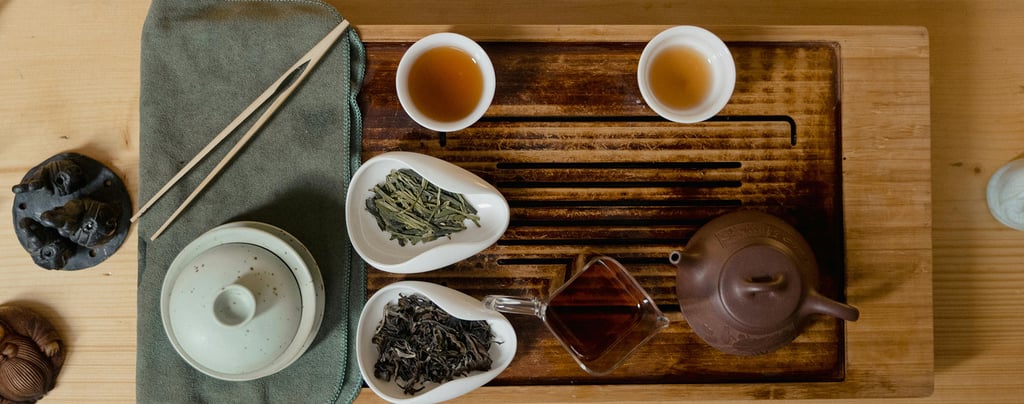

A proper tea tray is essential for Gongfu brewing, which involves more water and movement than Western-style brewing.
Essential features:
Drainage system: Channels for excess water
Raised platform: Keeps vessels above water level
Adequate size: Room for all components plus movement
Key accessories include:
Tea tongs: For handling hot cups safely
Tea strainer: Catches loose leaves
Tea needle: Clears teapot spouts
Tea scoop: Measures tea portions
Water kettle: Maintains optimal water temperature
Materials: How to Choose the Right One
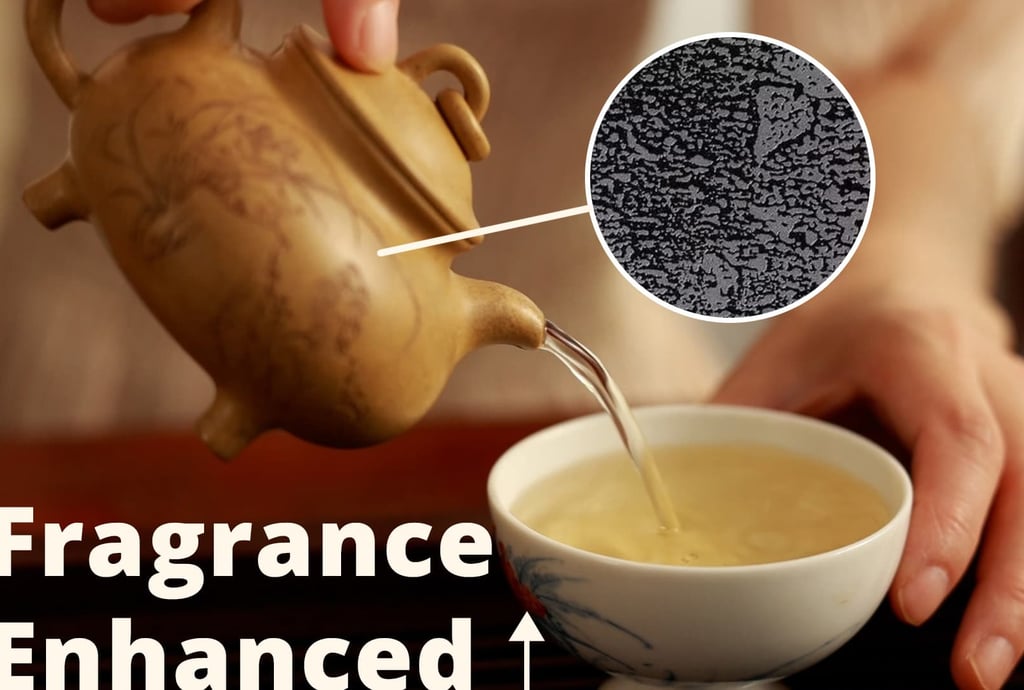

Yixing clay from Jiangsu Province is the most revered material for serious tea enthusiasts. This unique purple clay is slightly porous, allowing it to "breathe" with your tea and develop flavor over time.
Unique properties:
Porous structure absorbs tea oils
Improves flavor with each use
Excellent heat retention
Natural filtration properties
Best for:
Oolong teas: Enhances complexity
Pu'er teas: Smooths rough edges
Black teas: Adds depth and richness
Dedicated tea lovers: Rewards commitment
Ruyao represents one of China's most prized ceramic traditions. This special glaze develops a unique crackled pattern over time, making each piece increasingly beautiful and valuable.
Special features:
Develops crackling pattern with use
Changes color subtly over time
Highly collectible
Historical significance (Song Dynasty origin)
Best for:
Collectors: Investment and aesthetic value
Special occasions: Ceremonial brewing
Gift giving: Meaningful, beautiful presents
Display: Artistic value beyond function
Care considerations:
Handle with extra care
Allow natural aging process
Avoid temperature shocks
Store properly between uses
4.5. Glass or Metal Options
While less traditional, glass and metal options serve specific purposes in modern Gongfu brewing setups.
Glass benefits:
Visual brewing experience
Watch tea leaves unfurl
No flavor interference
Easy cleaning
Metal considerations:
Cast iron: Excellent heat retention (mainly for water heating)
Stainless steel: Durable, travel-friendly
Silver: Antimicrobial properties (luxury option)
Best for:
Visual learners: See brewing process
Travel: Durable options
Water heating: Cast iron kettles
Modern aesthetics: Contemporary kitchen designs
How to Choose a Gongfu Tea Set (Step-by-Step)
Selecting the perfect Gongfu tea set requires careful consideration of your personal preferences, lifestyle, and tea-drinking habits. Follow this systematic approach to make the best choice for your needs.
Step 1: Identify Your Tea Habits
Before choosing any components, honestly assess your current tea consumption patterns:
What teas do you drink most often?
Green teas (jasmine, longjing, sencha) → Porcelain gaiwan
Oolong teas (tieguanyin, da hong pao) → Yixing teapot or gaiwan
Pu'er teas (sheng, shou) → Yixing teapot
White teas (bai mu dan, silver needle) → Porcelain gaiwan
Mixed variety → Porcelain gaiwan (most versatile)
How often do you brew tea?
Daily: Invest in durable, easy-care materials
Weekly: Mid-range options work well
Special occasions: Focus on aesthetic appeal
What's your experience level?
Beginner: Start with porcelain gaiwan set
Intermediate: Consider ceramic or entry-level Yixing
Advanced: Explore premium Yixing or collectible pieces
Step 2: Decide on Size Requirements
Solo brewing (1 person):
Gaiwan/Teapot: 100-150ml
Fairness cup: 150-200ml
Tea cups: 2-3 pieces, 30-40ml each
Small group (2-4 people):
Gaiwan/Teapot: 150-200ml
Fairness cup: 200-300ml
Tea cups: 4-6 pieces, 30-50ml each
Larger gatherings (5+ people):
Multiple sets or larger capacity (200ml+)
Extra cups for guests
Larger tea tray for all components
Step 3: Choose Your Primary Material
Based on your tea habits from Step 1:
For versatility and beginners:
Primary choice: High-quality porcelain
Budget: $50-150 for complete set
Brands to consider: Jingdezhen porcelain makers
For dedicated oolong/pu'er drinkers:
Primary choice: Authentic Yixing clay
Budget: $100-500+ for quality pieces
Source: Buy from reputable dealers with proven authenticity and a trustworthy reputation
For daily use and durability:
Primary choice: Quality ceramic
Budget: $40-120 for complete set
Features: Look for dishwasher-safe options
For collectors and special occasions:
Primary choice: Ruyao or premium porcelain
Budget: $200-1000+ for exceptional pieces
Focus: Craftsmanship and historical significance
Step 4: Consider Design & Craftsmanship
Aesthetic preferences:
Traditional: Classic shapes, minimal decoration
Modern: Clean lines, contemporary colors
Artistic: Hand-painted, unique designs
Symbolic: Dragons, phoenixes, lotus motifs
Quality indicators:
Even glaze application
Smooth, comfortable handles
Precise lid fit (especially for gaiwans)
Balanced proportions
Clean, sharp spout (for teapots)
Cultural significance:
Pomegranate motifs: Fertility and abundance
Cloud patterns: Good fortune
Bamboo designs: Flexibility and strength
Crane imagery: Longevity and peace
Step 5: Set a Realistic Budget
Starter level ($30-80):
Basic ceramic or porcelain set
Essential components only
Good for exploring Gongfu brewing
Intermediate level ($80-250):
Quality porcelain or entry-level Yixing
Complete set with accessories
Durable for regular use
Premium level ($250-500):
Authentic Yixing or high-end porcelain
Artisan-crafted pieces
Investment-quality items
Collector level ($500+):
Master artisan works
Rare clays or historical reproductions
Heirloom-quality pieces
Step 6: Buy from Reputable Sellers
What to look for:
Detailed product descriptions
Clear photos from multiple angles
Authenticity guarantees
Customer reviews and testimonials
Return policies
Red flags to avoid:
Prices too good to be true
No authenticity documentation
Poor customer service
Vague product descriptions
No return policy
Maintenance & Care Tips
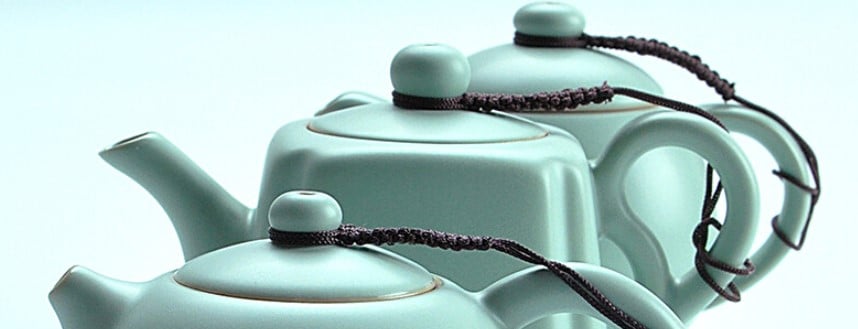

Proper care of your Gongfu tea set ensures longevity, optimal performance, and even improved flavor over time. Each material requires specific attention, but these guidelines will keep your investment in excellent condition.
General Care Principles
Daily maintenance:
Rinse immediately after each use with hot water
Air dry completely before storing
Handle gently – avoid sudden temperature changes
Use soft cloths for cleaning and drying
Weekly deep cleaning:
Thorough rinse with hot water
Gentle scrub with soft brush if needed
Check for chips or cracks
Proper storage in safe, dry location
Yixing Clay Teapot Care
Initial seasoning (for new teapots):
Rinse thoroughly with warm water
Fill with hot water and let sit for 10 minutes
Brew weak tea (your chosen type) and discard
Repeat 3-4 times to remove clay taste
Air dry completely
Daily care routine:
Rinse with hot water only – never use soap
Remove all tea leaves completely
Air dry with lid off to prevent mold
Wipe exterior with soft, damp cloth
Important rules:
One tea type only per pot
Never use detergent or soap
Avoid dishwasher completely
Don't scrub interior – patina is valuable
Long-term maintenance:
Use regularly – clay improves with use
Store in breathable container (not plastic)
Handle temperature changes gradually
Professional cleaning if needed (rare)
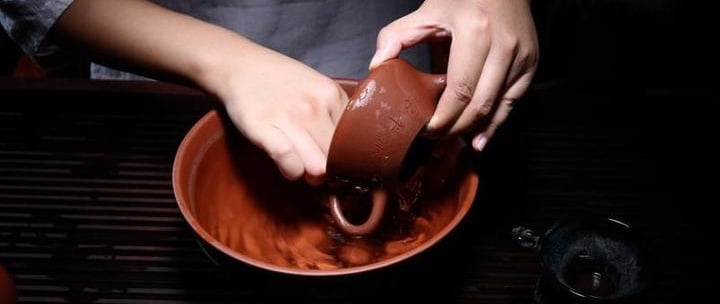

Subscribe to Our Newsletter - Discover TEAPOTARTISAN
Enter your email address to subscribe to the latest updates on TEAPOTARTISAN products, events, and services. You can unsubscribe at any time by sending an email to our designated email address. Your email address will only be used to send you relevant information about TEAPOTARTISAN, and we will not share or transfer your email address to any third parties.
